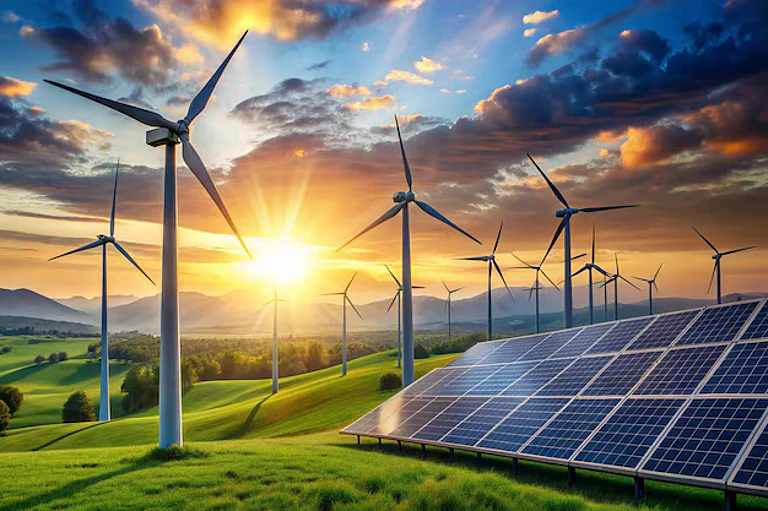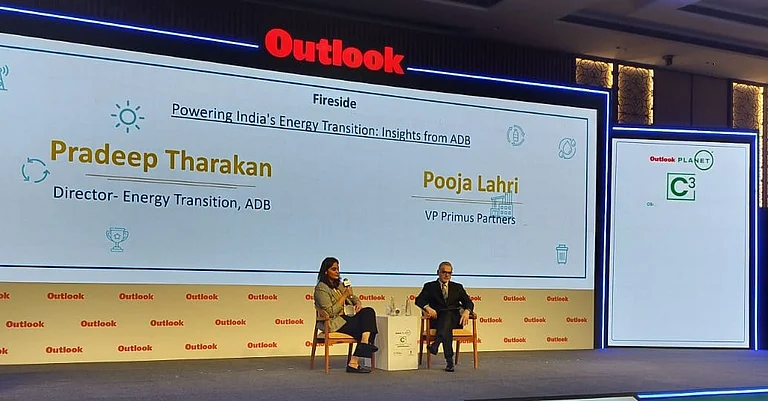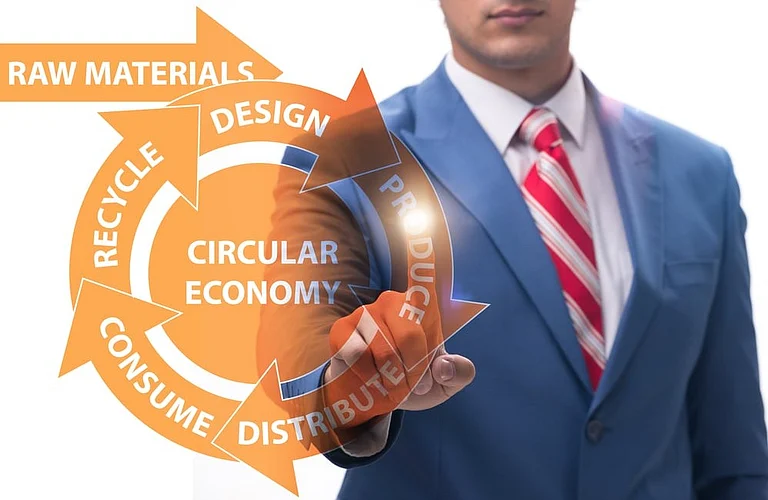The world is now facing a serious crisis. Two to three years back, it could still be a board room conversation on how crucial we stand in terms of climate change being a theoretical threat, but now, as you read this, the world is grappling with the reality of water shortage & extreme environmental degradation.
India’s Decarbonisation future lies in all All-Electric, All Digital Economy
India's road to net zero hinges on electrification, digital innovation and urgent climate action
Each minute passing by is impacting the lives of our dear ones; undoubtedly, the crisis is now within our own homes. Additionally, today, as we mark Earth Day 2025, it's an even more vital discourse, asking for our collective action in illustrating the need for resource preservation and climate action support.
This year’s theme of Earth Day has struck a chord again. ‘Our Power, Our Planet’ reminds us that the power to protect our environment lies in the choices we make today. In 2024, India reached its highest greenhouse gas (GHG) emissions to date with a 0.5% increase from the previous year.
The electricity industry continues to be the highest emitter, contributing roughly a third of the total emissions. A large portion of these emissions result from suboptimal energy consumption in several sectors, including industries, buildings, and transportation. To change this situation, India has to implement renewable-powered, end-to-end electrification solutions, aided by AI design to minimise consumption and waste.
The path to a sustainable future lies in the convergence of electrification and digitalisation; only by advancing both together can India transform its energy landscape and effectively decarbonise key sectors.
The nation cannot waste any further time to be net zero by 2070. Around the world, governments are in a race to decarbonise. The European Union is setting its sights on climate neutrality by 2050, the United States is aiming for mid-century net-zero emissions, and China is eyeing 2060.
Unless we alter the way we produce, use, and govern energy & transition to an all-electric, all-digital economy. This requires a strategic shift towards decentralised energy systems such as microgrids, real-time energy monitoring, and predictive maintenance technologies that minimise wastage and maximise efficiency.
The Challenges and Solutions For Energy Transition
The climate disasters of recent years from deadly floods in Germany to the wildfires in California serve as a warning. India is no exception. Himachal Pradesh's floods, Delhi's blistering heat, and Chennai's harsh water shortages serve to reinforce the precarious balance we are upturning. The government has laid down the ambitious goal of achieving 500 GW of non-fossil fuel capacity by 2030.
The planet currently moves toward an era where all facilities will deploy smart monitoring systems to regulate energy usage in real-time. India cannot be left behind. To achieve sustainable urbanisation, it is crucial to connect usage of energy-efficient construction with district cooling infrastructure and AI-powered resource management systems.
Smart cities should be supported by digital monitoring networks that optimise energy consumption. Current technologies including advanced sensors along with automated systems to reduce energy loss while boosting efficiency levels.
Accounting for 37% of India’s carbon emissions, the power sector will require sustained investment equivalent to 2% of GDP annually over the next decade and between 1.5% and 2% over the next 25 years to drive a sustainable transition. Recognising this, India is accelerating efforts to electrify key economic sectors, particularly heavy industries that collectively consume a massive 70 GWs of power.
It is critical to recognise that demand-side technological interventions—focused on energy efficiency, electrification and circularity, can help reduce emissions by as much as 55%. Adopting circular economy principles—such as recycling industrial heat, reusing waste materials, and integrating renewable energy sources into production processes will ensure that economic growth does not come at the cost of environmental degradation.
Sectors like steel, cement, and chemicals which are vital to the nation’s growth must not only pivot to renewable energy and adopt digital technologies to reduce waste & enhance efficiency. Digital twin technology can simulate industrial processes, helping companies identify inefficiencies and optimise operations before implementing costly physical changes. This transformation demonstrates that sustainability and industrial progress can go hand in hand, adding a vital touch of green to an otherwise grey sector.
The Urgency of Now
Critics argue that the cost of large-scale transition is too high for a developing country. However, the cost of inaction is far greater. Heatwaves are already making parts of India unlivable. Water shortages are driving migration. Erratic weather is destroying crops, pushing millions into poverty.
Every rupee spent on sustainability today will save billions in economic losses tomorrow. The financial case for sustainability is clear—investments in energy efficiency typically yield returns within a few years, while a resilient energy ecosystem safeguards economic stability.
This transition is not just the responsibility of the government even industries, and individuals must play their part. Businesses must electrify operations, cut emissions, and adopt smarter and more efficient processes. From AI-powered building automation to green supply chain optimisation, industries must leverage technology to drive meaningful emissions reductions.
We, as fellow Indians, are now subjected to the seriousness of our surroundings, and Earth Day is a clarion call for action on the same. This day urges us to move beyond symbolic gestures and embrace tangible, long-term solutions.
We have the resources, technology, and even the human capital to transition. A shift to an all-electric, all-digital future is not just an environmental necessity but also an economic opportunity to position the country as a global leader in the green transition. This should serve as a stark reminder that the nation must adopt sustainable water and energy management strategies to build a resilient future with the only question in mind:
How fast can we act before it is too late?
The author is Vice President- Sustainability at Greater India Zone.




